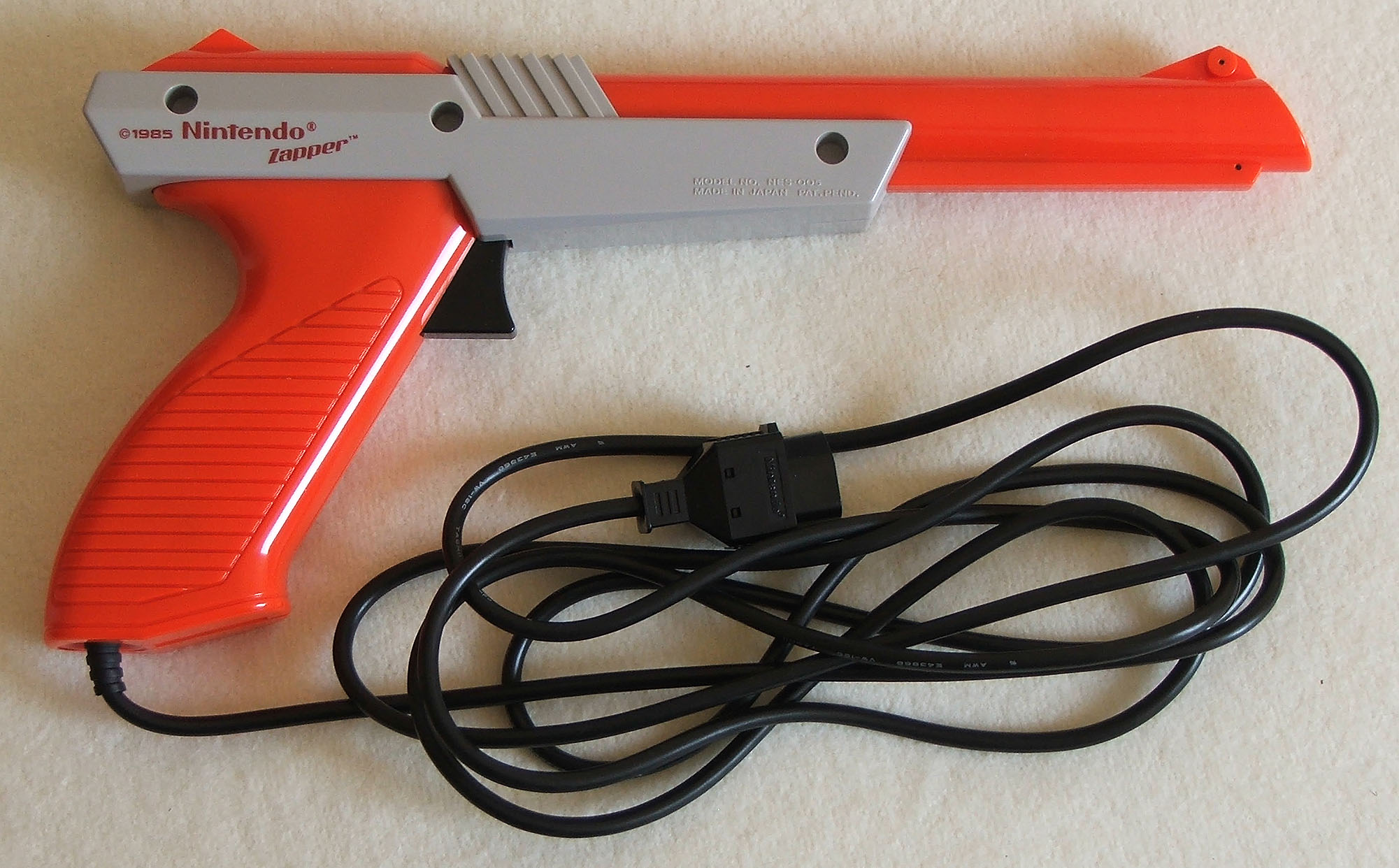Ever wanted the power to control your games with just your hand, controller free? While Microsoft seems to think so more recently, the NES Power Glove was the answer to this back in the day. Contrary to what most believe, Nintendo had no hand in desing or manufacturing of the Poer Glove. Nintendo only officially licensed it. the Power Glove is pretty dorky looking, and is an absolute mess to control pretty much any game with. To further complicate things, you have to set up multiple detectors on your TV to pick it up, and even worse, every game has a code that must be entered on the Power Glove so that it could be compatible. Ever programmed a universal remote, and gone through the book looking for your TVs code, only to find it has about 20 and you have to go down the list until you find the one that works? think that, but for games. It was a mess.
Have you ever wanted your own personal robot? Sure, now you can get those little interactive toys, but can Robosapien play your NES as a second player? Nintendo's Robotic Operating Buddy(a.k.a. R.O.B.) can! though only compatible with a couple of games, it was a pretty neat concept. More recently, R.O.B. has made a cameo appearance in F-Zero GX, and is a playable character in both Mario Kart DS and Super Smash Bros. Brawl.
Lots of people today have devices such as the iPhone that take care of almost everything. They don't need to carry a camera, because a single device already takes care of that. Though it's common in products today, the Nintendo Game Boy was quite possibly the first multimedia device, thanks to peripherals.
With the Game Boy camera, you could turn your Game Boy into...um...well, a camera, albeit of low quality.
Now that you've taken a picture with your Game Boy Camera, you're probably
The SNES, successor of the NES, had a light gun like its predecessor. This gun was called the super Scope, and was more bazooka like in shape. though a bit more advanced than the zapper, it was still pretty simple technology. If you're a younger reader, and this sounds familiar, the super Scope also appears as a weapon in the Super smash Bros. Series.
A game was released for the SNES called Mario Paint. Though not much more that a mimicry of MS Paint with some extra features like a song maker added in, it was still fairly popular. And what does one need to operate what is basically a computer program? a mouse of course! the SNES Mouse came bundled with he game, and was just a simple ball mouse.
Playing Game boy games on the tiny unlit screen can be tiresome, and furthermore, the thing was a battery eating monster. Well, with the Super Game Boy, you can play your Game Boy games on your TV! The Super Game Boy is a large SNES cartridge with a port for the Gameboy game. Instead of displaying a black and white image, you may select from 3 limited color pallets. Some games even had features only available when playing on Super Game Boy!
The N64's peripherals were mostly "controller expansions". The Rumble Pack was a small cartridge that plugged into the controller's memory card port, and added rumble feedback. although now a standard in almost every controller, at the time, ti was something normally only found in arcades.
There are a couple of other honorable mentions, such as the Hey, you! Pikachu! Microphone, and the transfer pack, but the N64 actually has very few peripherals.
Before there was Guitar Hero or Rock Band, music games were normally found only in arcades. Well, the makers of Taiko Drum Master made a game called Donkey Konga for the Gamecube, and a sequel, donkey Konga 2. both of these games, as well as an adventure game called Donkey Kong Jungle beat used the DK Bongo controller. The controller was a replica of a set of bongos, and, just like real bongos, you hit them with your palm to, in the case of Donkey Konga, play the correct note, or, in the case of Jungle Beat, move and jump.
After the Game Boy Advance came along, and usurped the Game Boy and Game boy Color, the cartridges changed in shape. GBA games would not fit in a Super Game Boy, and nether would Game Boy Color only games. Nintendo's answer was the Game Boy Player. This device screwed into the bottom of your Gamecube, increasing its height by about an inch. All Game Boy games are compatible, and since it was only about $50 when it came out,it was a more affordable, albeit less portable alternative to owning a Game Boy Advance.
Speaking of the Game boy advance, the e-Reader was the only peripheral for said system. This catridge allowed you to scan collectible e-Reader cards to unlock NES emulations, extra levels in games, character profiles, and in the case of animal Crossing, it could be linked to the Gamecube via a link cable to unlock items.
In more recent years, things like the game Boy Camera come standard in systems like the DSi, and the Wii remote is basically a combination of a light gun and the Power Glove. So next time you want to ramble on about how Nintendo's problem is peripherals, keep in mind that they have always been this way. Recently, it is simply more obvious and prevalent.













No comments:
Post a Comment